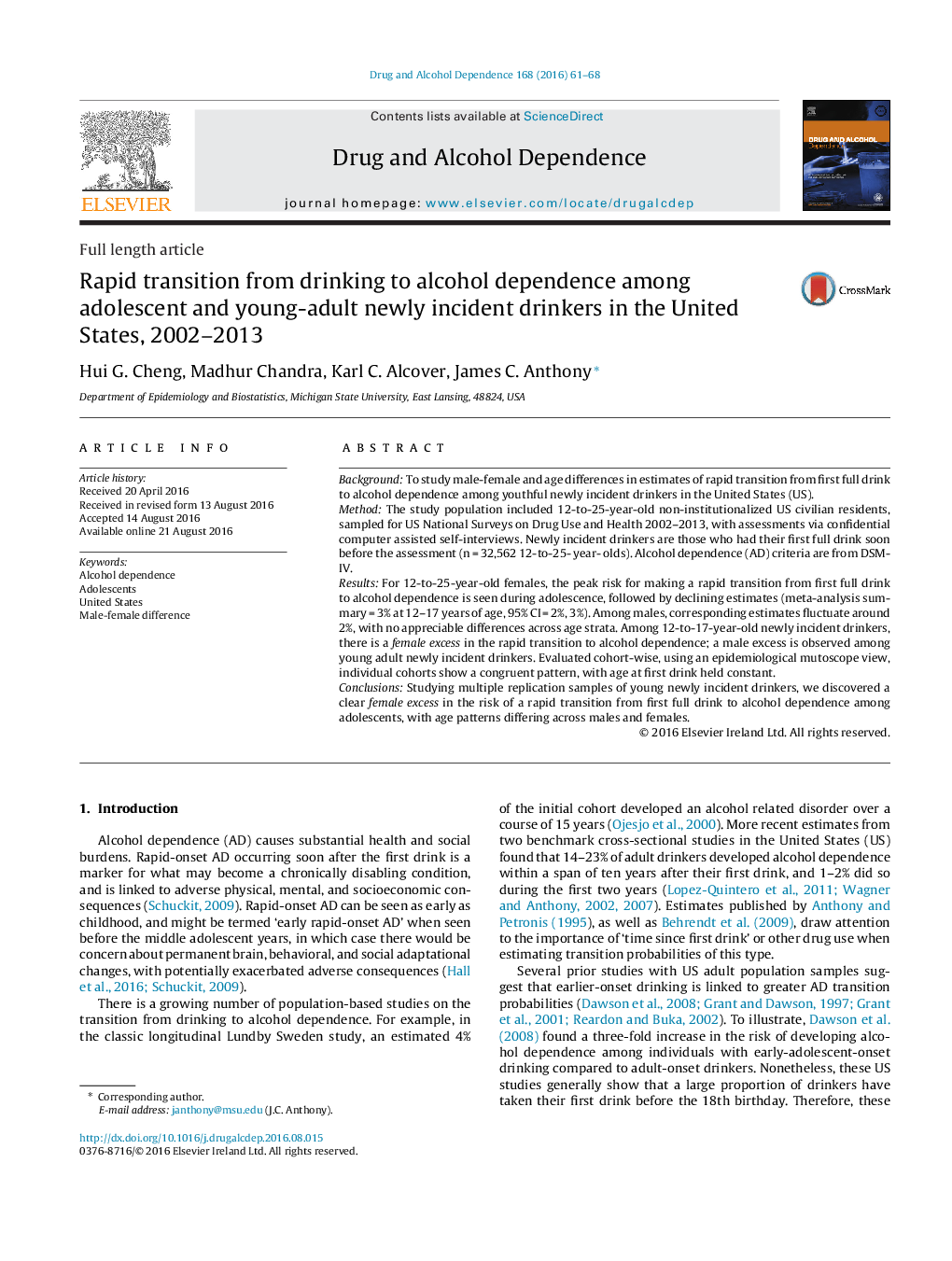| Article ID | Journal | Published Year | Pages | File Type |
|---|---|---|---|---|
| 5120449 | Drug and Alcohol Dependence | 2016 | 8 Pages |
â¢We studied the rapid transition from 1st full drink to alcohol dependence.â¢In estimated male-female differences, we discovered an adolescent female excess.â¢Among females, the estimated transition probability declines with age at first drink.â¢Among males, there are no appreciable differences in relation to age at first drink.â¢This study's focus on newly incident drinkers helps constrain recall bias.
BackgroundTo study male-female and age differences in estimates of rapid transition from first full drink to alcohol dependence among youthful newly incident drinkers in the United States (US).MethodThe study population included 12-to-25-year-old non-institutionalized US civilian residents, sampled for US National Surveys on Drug Use and Health 2002-2013, with assessments via confidential computer assisted self-interviews. Newly incident drinkers are those who had their first full drink soon before the assessment (n = 32,562 12-to-25- year- olds). Alcohol dependence (AD) criteria are from DSM-IV.ResultsFor 12-to-25-year-old females, the peak risk for making a rapid transition from first full drink to alcohol dependence is seen during adolescence, followed by declining estimates (meta-analysis summary = 3% at 12-17 years of age, 95% CI = 2%, 3%). Among males, corresponding estimates fluctuate around 2%, with no appreciable differences across age strata. Among 12-to-17-year-old newly incident drinkers, there is a female excess in the rapid transition to alcohol dependence; a male excess is observed among young adult newly incident drinkers. Evaluated cohort-wise, using an epidemiological mutoscope view, individual cohorts show a congruent pattern, with age at first drink held constant.ConclusionsStudying multiple replication samples of young newly incident drinkers, we discovered a clear female excess in the risk of a rapid transition from first full drink to alcohol dependence among adolescents, with age patterns differing across males and females.
